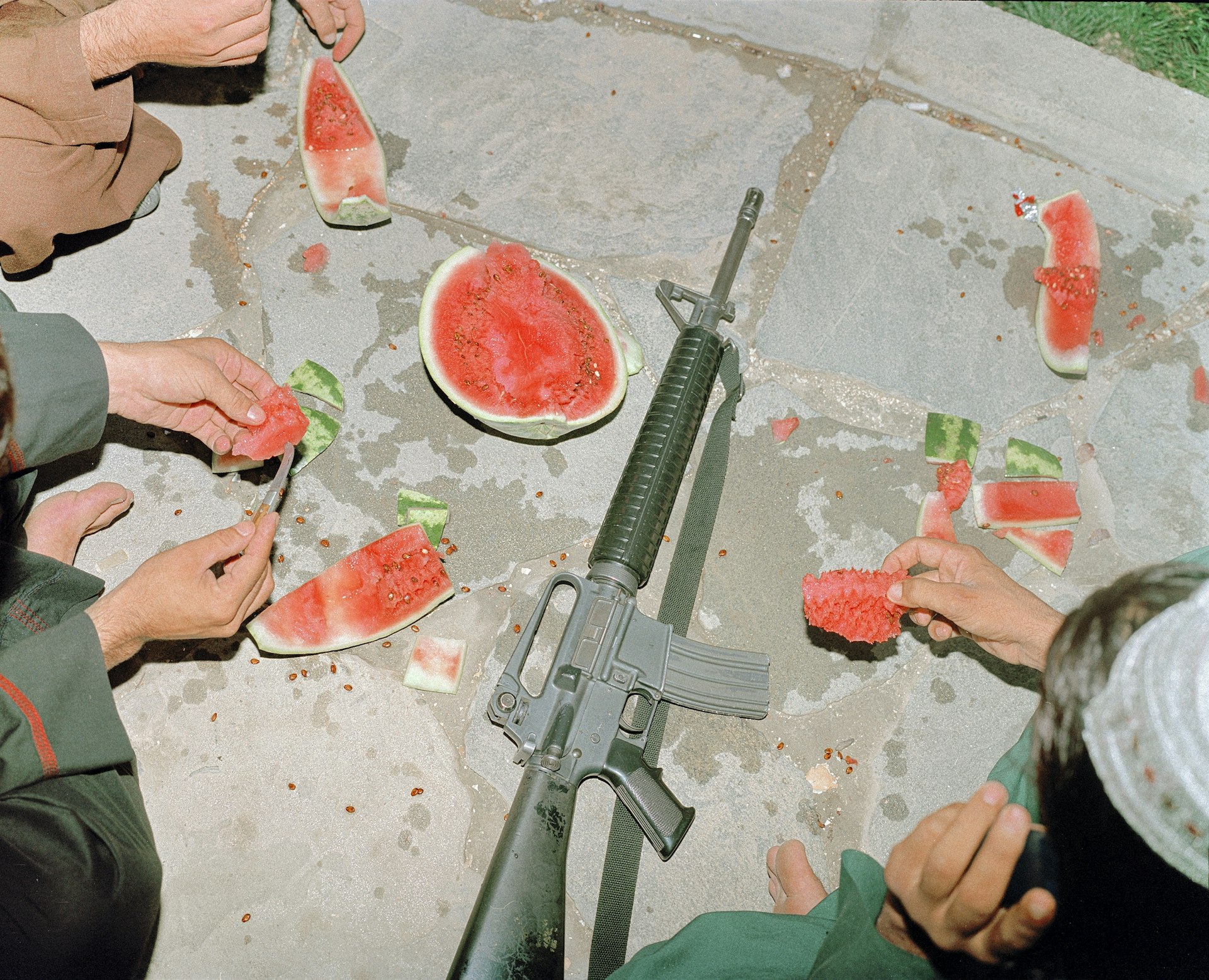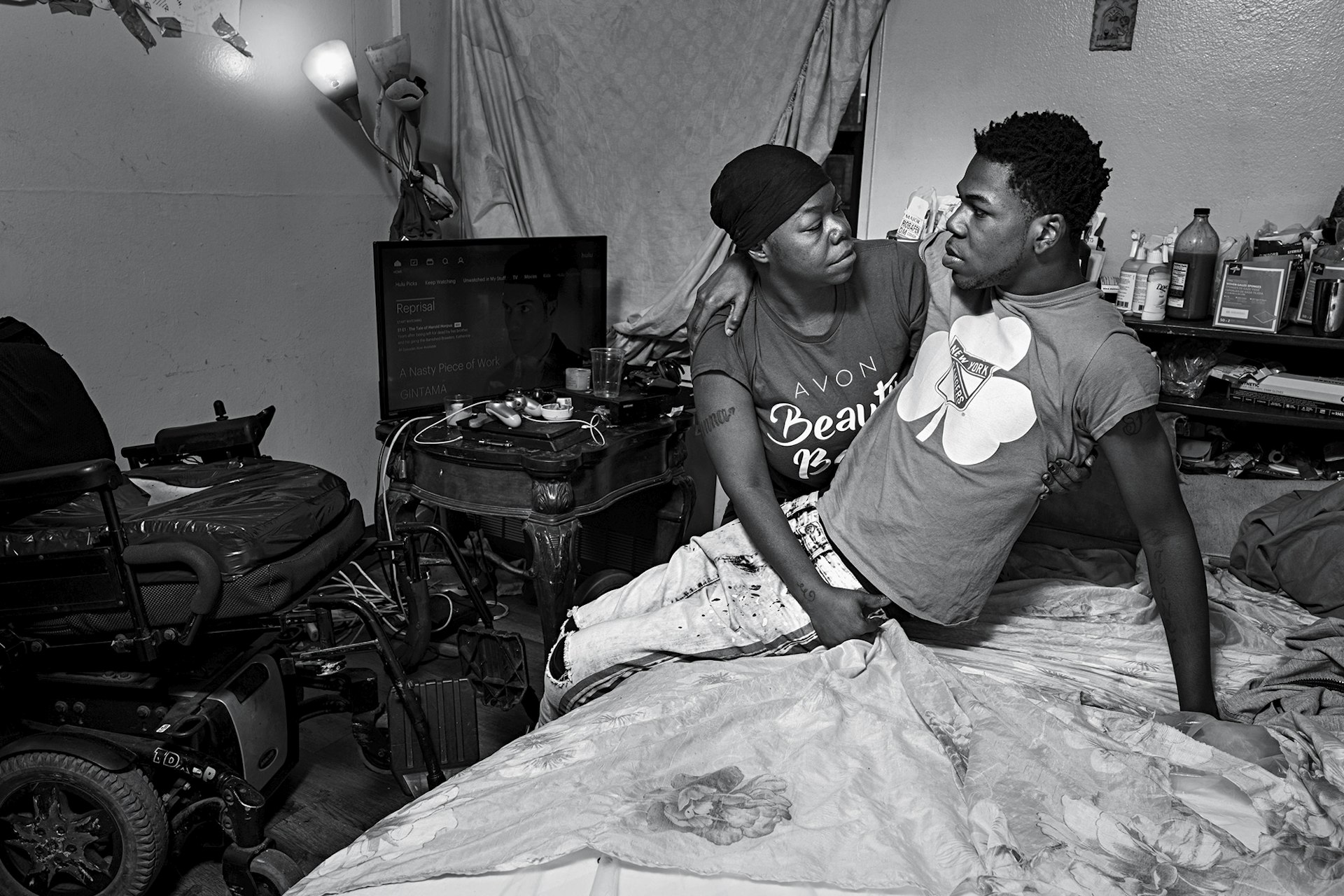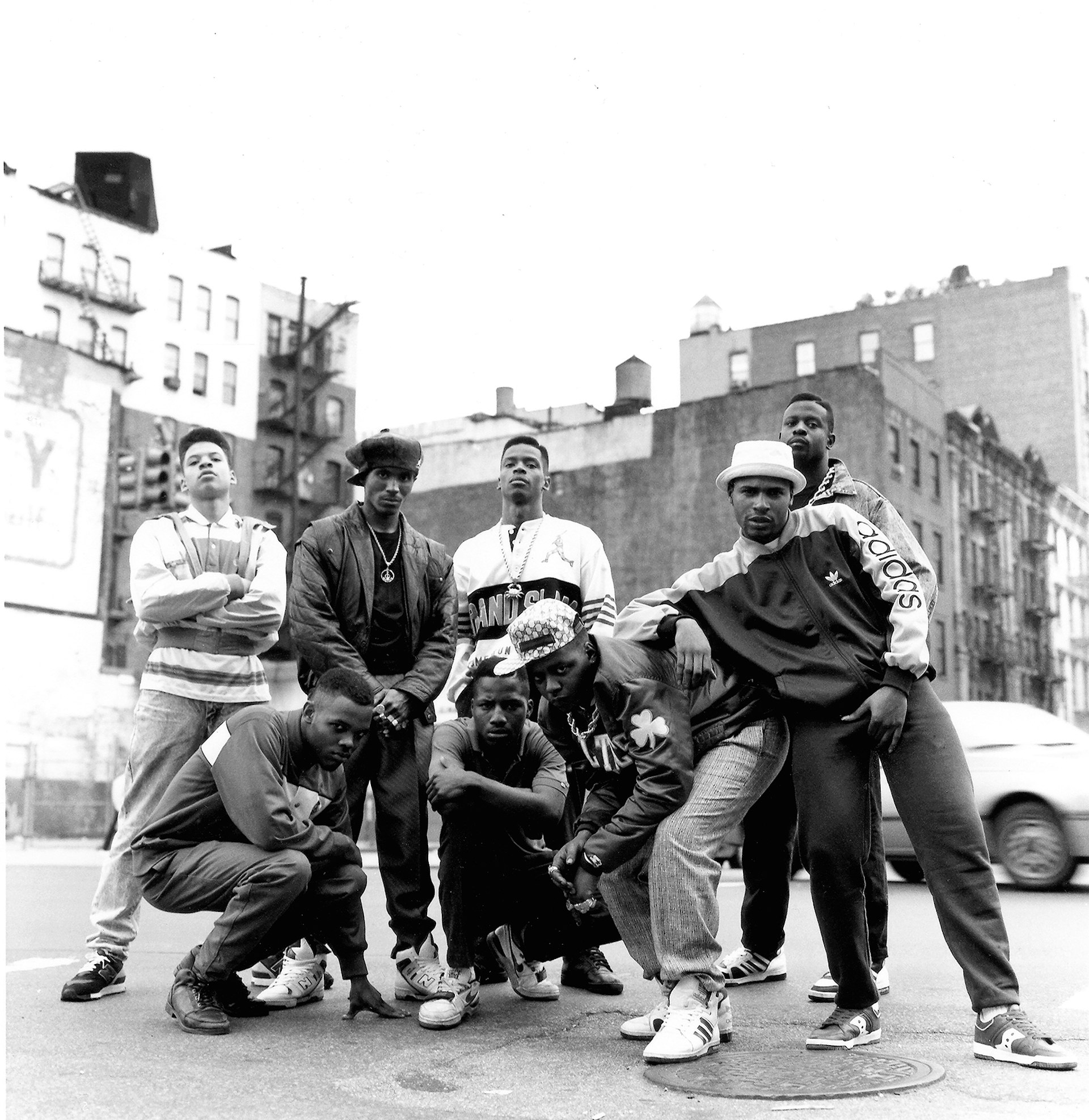A brutal portrait of gang culture in El Salvador
- Text by Joseph Marczynski
- Photography by Tariq Zaidi

El Salvador has the highest murder rate in the world – a grim record predominantly down to its two warring gangs, Mara Salvatrucha (MS-13) and 18th Street (Barrio 18).
Almost 10 per cent of El Salvador’s 6.4 million population is estimated to be a member of either gang – through choice, coercion or intimidation. Male applicants for MS-13 must withstand 13 seconds of beating from those already initiated – and murder a rival gang member.
In his new photography collection, Sin Salida (No Way Out) (Gost Books), photographer Tariq Zaidi travelled to the dangerous streets and prisons of El Salvador, to understand how violence and terror at a frightening scale impacts the communities who live there.

Inmates look out of a cell
It was a challenge for Zaidi to even gain access to the country. After assembling a team of local experts, journalists and fixers, it took months of writing to the government before he was allowed entry. Upon arrival, he quickly discovered a complex maze of gang-controlled territories, marked with graffiti, where even local politicians must pay to enter.
These strict borders are enforced by brutal means. Zaidi described a group of schoolboys who ran between these forbidden boundaries – presumably as entertainment. Eventually, they were attacked and one of the boys was kidnapped. His body was discovered in a ditch days later, decapitated.

A man prepares coffins at his workshop
Mutilations are a common method of attack: bodies are hacked up with machetes and scattered, making it difficult for the authorities to identify them, or to track missing people. Disappearances are also common. Zaidi shared a particularly grisly example, where his photos were used to identify a body.
After photographing a decomposing corpse in a dam he was shown by a fixer, Zaidi was approached by a woman searching for her missing son. “She told me that she had pictures of [her son] from the night he vanished,” he says. “We put her cell phone pictures and my camera pictures side by side and you could see it was the same shirt material,” Zaidi explains. “As soon as she saw the pictures together, she screamed in pain.”

Inmates display their fashion creations

Inmates perform gymnastics
Zaidi discovered that death at a rate rarely seen outside of war zones has a profound effect on the national psyche. He describes a “complete breakdown in trust and safety”, adding that communities in El Salvador are “gripped by pervasive fear, violence and intimidation in a manner that’s rarely seen”.
The photographer also travelled to El Salvador’s overcrowded prisons. Jail was the only place he could speak to gang members directly. “The only way to meet them ‘safely’ is in prison,” he explains. “Because of the way gangs work, it is impossible to contact them outside.”
Incarcerated gang members are subject to strict rules, often allowed no visitors, phones and are confined to crowded communal cells. These cells are a hotbed of disease, according to Zaidi. “Extreme heat, unsanitary conditions and tuberculosis claimed the lives of many inmates – even before coronavirus,” he explains.

The burial of a young alleged gang member, age 22
Despite their imprisonment, incarcerated gang members exert a powerful influence. The former Minister of Justice and Security, Rogelio Rivas, estimates that incarcerated gang leaders order “80 per cent of all the attacks in the country”.
“A culture of fear pervades gang neighbourhoods: anyone – from the shopkeeper to the waiter – could be an informant,” reflects Zaidi. “Even funerals are held quickly, to avoid being sites of further violence. This culture of fear paralyses Salvadoran society.”

The wake of a 37-year-old man who was killed in a motorcycle drive-by shooting

A policeman during patrol

A tactical patrol checks a passerby

View of San Salvador

A bystander looks on
Sin Salida is available now from Gost Books. See more of Tariq’s work on Instagram, Facebook and his website.
Follow Joseph Marczynski on Twitter.
Enjoyed this article? Like Huck on Facebook or follow us on Twitter.
Latest on Huck

“I refuse to accept child poverty is a normal part of our society”: Apsana Begum MP on voting to scrap the cap
After seeking to “enhance” the King’s Speech by voting for the scrapping of the controversial two child benefit cap, the MP for Poplar and Limehouse lost the Labour Whip.
Written by: Apsana Begum

Is skateboarding really a subculture anymore?
With skate’s inclusion in the Olympics, Kyle Beachy asks what it means for the culture around the sport, and whether it’s possible to institutionalise an artform.
Written by: Kyle Beachy

Autism cannot be cured — stop trying
A questionable study into the ‘reversal’ of autism does nothing but reinforce damaging stereotypes and harm, argues autistic author Jodie Hare.
Written by: Jodie Hare

Bristol Photo Festival returns for second edition
After the success of it’s inaugural run, the festival returns this autumn with exhibitions, education and community programmes exploring a world in constant motion through still image.
Written by: Ben Smoke

Documenting the life of a New York gang leader paralysed by gun violence
New photobook ‘Say Less’ is a complex yet humanising look into a life wrecked by gun violence and organised crime.
Written by: Isaac Muk

The woman who defined 80s Hip Hop photography
A new exhibition brings together Janette Beckman’s visionary and boundary pushing images of an era of cultural change and moral panic.
Written by: Miss Rosen